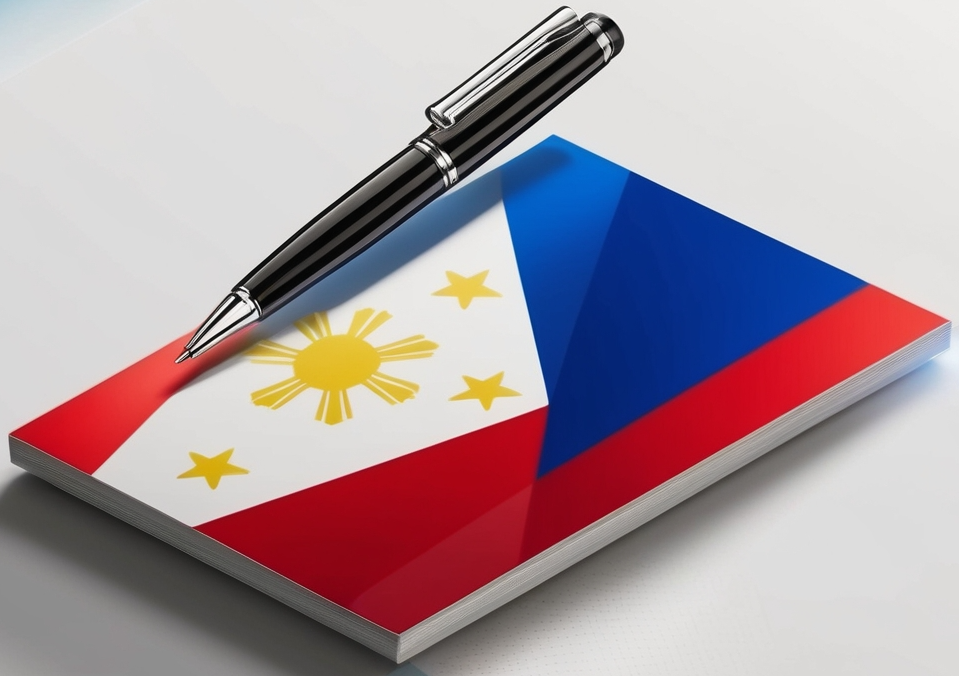The Philippines, an archipelagic nation with a rich tapestry of cultures, has a long and storied history of traditional healing practices. These time-honored methods, passed down through generations, continue to play a significant role in the healthcare landscape of the country. Despite the advent of modern medicine, many Filipinos still turn to traditional healing practices for various ailments and spiritual needs. This blog post delves into the world of Filipino traditional healing, focusing on the use of herbs, massage techniques, and healing rituals that have been integral to the country’s cultural identity for centuries.
The Historical Context of Traditional Healing in the Philippines
Pre-Colonial Era
The roots of traditional healing in the Philippines can be traced back to the pre-colonial era. Before the arrival of Spanish colonizers in the 16th century, the archipelago was home to diverse indigenous communities, each with its own set of healing practices. These practices were deeply intertwined with animistic beliefs, where nature spirits and ancestral deities played crucial roles in maintaining health and well-being. Healers, known by various names such as babaylan, catalonan, or mananambal, were respected figures in their communities, serving as intermediaries between the physical and spiritual worlds.
Colonial Influence
The arrival of Spanish colonizers in 1565 marked a significant turning point in the evolution of Filipino traditional healing practices. The introduction of Christianity and Western medical concepts led to a complex interplay between indigenous beliefs and colonial influences. While some traditional practices were suppressed or went underground, others adapted and syncretized with Catholic beliefs and rituals. This period saw the emergence of new healing traditions that blended pre-colonial practices with Spanish and Catholic elements, creating a unique Filipino approach to traditional medicine.
Post-Colonial Era
Following the end of Spanish colonial rule and subsequent American occupation, the Philippines experienced further changes in its healthcare landscape. The 20th century saw the widespread adoption of Western medical practices, but traditional healing methods continued to persist, especially in rural areas and among indigenous communities. The post-colonial era has been characterized by efforts to preserve and document traditional healing practices, recognizing their cultural significance and potential contributions to modern healthcare.
Herbal Medicine in Filipino Traditional Healing
Importance of Medicinal Plants
Herbal medicine forms the cornerstone of Filipino traditional healing practices. The country’s rich biodiversity has provided healers with a vast array of medicinal plants, each with its own set of therapeutic properties. These herbs are used to treat a wide range of ailments, from common colds and digestive issues to more complex conditions. The knowledge of these plants and their applications has been passed down through generations, often within families or through apprenticeships with experienced healers.
Common Medicinal Plants and Their Uses
The Philippines boasts an extensive repertoire of medicinal plants. Here are some of the most commonly used herbs in Filipino traditional medicine:
| Plant Name | Filipino Name | Common Uses |
|---|---|---|
| Lagundi | Lagundi | Respiratory issues, fever, cough |
| Sambong | Sambong | Kidney stones, urinary tract infections |
| Ampalaya | Ampalaya | Diabetes management, blood sugar control |
| Yerba Buena | Yerba Buena | Pain relief, digestive issues |
| Niyog-niyogan | Niyog-niyogan | Intestinal parasites, digestive problems |
| Tsaang Gubat | Tsaang Gubat | Diarrhea, stomach aches |
| Guava | Bayabas | Wound healing, diarrhea |
| Malunggay | Malunggay | Nutritional supplement, lactation aid |
These plants are used in various forms, including decoctions, infusions, poultices, and even as ingredients in traditional dishes. The preparation and administration of herbal remedies often involve specific rituals or methods believed to enhance their efficacy.
Scientific Research and Validation
In recent years, there has been growing interest in scientifically validating the efficacy of traditional Filipino herbal medicines. Research institutions and pharmaceutical companies have conducted studies on various medicinal plants, aiming to identify active compounds and potential therapeutic applications. For instance, a study published in the Journal of Ethnopharmacology in 2015 found that extracts from Lagundi (Vitex negundo) exhibited significant anti-inflammatory and bronchodilatory effects, supporting its traditional use for respiratory conditions.
Traditional Massage Techniques in Filipino Healing
The Role of Massage in Filipino Culture
Massage, known as “hilot” in Filipino, is an integral part of traditional healing practices in the Philippines. It is not merely a form of relaxation but a comprehensive healing modality that addresses various physical and spiritual ailments. Hilot practitioners, often referred to as manghihilot, are respected members of their communities, believed to possess innate healing abilities passed down through generations.
Techniques and Applications
Filipino traditional massage encompasses a wide range of techniques, each tailored to address specific health concerns. Some common hilot techniques include:
Bentosa (Cupping)
This technique involves the use of small cups placed on the skin to create suction. It is believed to improve blood circulation, relieve muscle tension, and draw out “bad air” or negative energy from the body. Bentosa is often used to treat respiratory issues, muscle pain, and fatigue.
Hagod (Stroking)
Hagod involves long, sweeping strokes along the body’s meridians or energy pathways. This technique is used to promote relaxation, improve blood circulation, and restore the body’s energy balance. It is particularly effective for stress relief and general well-being.
Pindot-pindot (Acupressure)
Similar to Chinese acupuncture but without needles, pindot-pindot involves applying pressure to specific points on the body. This technique is used to alleviate pain, improve organ function, and address various health issues by stimulating the body’s self-healing mechanisms.
Tapal (Poultice Application)
Tapal involves the application of heated herbal poultices to specific areas of the body. This technique is often used in conjunction with massage to treat muscle pain, joint problems, and various skin conditions. The heat and herbal properties of the poultice are believed to penetrate deeply into the affected areas, promoting healing and pain relief.
Healing Rituals and Spiritual Practices
The Intersection of Healing and Spirituality
In Filipino traditional healing, the line between physical and spiritual health is often blurred. Many healing practices incorporate spiritual elements, reflecting the belief that illness can have both physical and metaphysical causes. Healing rituals are designed to address not only bodily ailments but also to restore balance to the spirit and strengthen the individual’s connection to the divine.
Common Healing Rituals
Pagtatawas (Candle Wax Divination)
This ritual involves melting candle wax and dropping it into water. The resulting shapes are interpreted by the healer to diagnose the cause of an illness or to determine the appropriate treatment. Pagtatawas is often used as a preliminary step in the healing process, guiding the healer’s subsequent actions.
Tawas (Alum Crystal Healing)
In this practice, an alum crystal is passed over the patient’s body while the healer recites prayers or incantations. The crystal is believed to absorb negative energies and reveal the nature of the illness. After the ritual, the crystal is burned, and its ashes are examined for further insights into the patient’s condition.
Basbas (Blessing)
Basbas is a healing ritual that involves the use of blessed objects, such as holy water, oils, or herbs. The healer applies these substances to the patient while reciting prayers or invoking divine assistance. This ritual is believed to cleanse the body and spirit, providing protection and promoting healing.
Kulam (Countering Sorcery)
While not a healing ritual per se, kulam refers to the practice of countering perceived curses or malevolent spells. Healers who specialize in this area use a combination of prayers, herbs, and rituals to protect individuals from spiritual attacks and reverse the effects of negative energy.
The Role of Traditional Healing in Modern Filipino Healthcare
Integration with Western Medicine
Despite the widespread availability of Western medical care in the Philippines, traditional healing practices continue to play a significant role in the country’s healthcare landscape. Many Filipinos adopt a complementary approach, combining traditional methods with modern medical treatments. This integration is particularly evident in rural areas, where access to conventional healthcare may be limited.
Government Recognition and Regulation
The Philippine government has taken steps to recognize and regulate traditional healing practices. In 1997, the Traditional and Alternative Medicine Act (TAMA) was enacted, establishing the Philippine Institute of Traditional and Alternative Health Care (PITAHC). This institution is tasked with researching, developing, and promoting traditional and alternative healthcare systems, including Filipino traditional healing practices.
Table: Key Milestones in the Recognition of Traditional Healing in the Philippines
| Year | Event |
|---|---|
| 1997 | Enactment of the Traditional and Alternative Medicine Act (TAMA) |
| 2000 | Establishment of the Philippine Institute of Traditional and Alternative Health Care (PITAHC) |
| 2006 | Launch of the National Traditional and Alternative Health Care Development Program |
| 2012 | Inclusion of selected herbal medicines in the Philippine National Drug Formulary |
| 2016 | Implementation of the Philippine Traditional Knowledge Digital Library |
Challenges and Opportunities
While traditional healing practices remain popular, they face several challenges in the modern era:
- Lack of scientific validation for some practices
- Concerns about safety and standardization
- Loss of traditional knowledge due to urbanization and modernization
- Potential exploitation by unscrupulous practitioners
However, these challenges also present opportunities for research, documentation, and the development of evidence-based traditional healing practices that can complement modern healthcare systems.
The Future of Traditional Healing in the Philippines
As the Philippines continues to navigate the complexities of modernization and globalization, traditional healing practices remain an important part of its cultural heritage and healthcare system. The enduring popularity of herbs, massage, and healing rituals speaks to their perceived effectiveness and cultural significance. Moving forward, the key to preserving and enhancing these practices lies in striking a balance between tradition and innovation.
Efforts to scientifically validate traditional remedies, standardize practices, and integrate them into the formal healthcare system are crucial steps toward ensuring their relevance in the 21st century. At the same time, it is essential to preserve the cultural and spiritual aspects of these healing traditions, recognizing that their efficacy often extends beyond the purely physical realm.
As research continues and more Filipinos seek holistic approaches to health and wellness, traditional healing practices are likely to evolve, adapting to new challenges while maintaining their core principles. By embracing this rich heritage and exploring its potential contributions to modern healthcare, the Philippines can continue to benefit from the wisdom of its ancestors while addressing the health needs of its population in the years to come.
Disclaimer: This blog post is based on information available up to 2017 and is intended for informational purposes only. It should not be considered as medical advice. Always consult with a qualified healthcare professional before starting any treatment. If you notice any inaccuracies in this post, please report them so we can correct them promptly.




